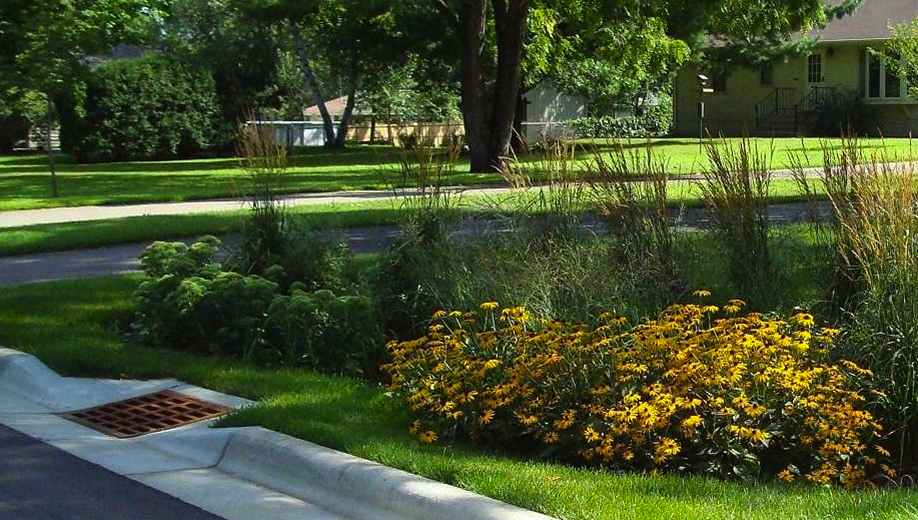To help protect our lakes and rivers, we need to manage how water flows over our roofs, driveways, and lawns. But how can you help when you don't own any land? If you’re a renter, this can be challenging. Here are some simple ideas that even your property manager can get behind.

The Problem: The Three Q's
Quality: Stormwater carries things we leave on impervious surfaces. It carries:
- Nutrients from leaves, grass clippings, pet waste, and fertilizers cause algae growth and reduce oxygen available to animals
- Dirt that can cloud the water and make it hard for aquatic plants to grow; Heat
- Bacteria, trash, other pollutants such as motor oil, de-icer, paint, and pesticides
Quantity: It doesn’t soak in, so streets, sewers, and lakes and rivers receive more water
Quickness (rate): Water flows faster over impervious surfaces, causing flash flooding and erosion
The Solutions
Slow it down: Reduce impervious areas and allow water to soak into ground. This can be done in a number of ways:
- Install pervious pavement or less pavement
- Cultivate taller grass, good soils, more garden areas, raingardens
- Direct water flow using gutter downspouts, dry creek beds, or drains
Use it: Install rain barrels or direct water flow to garden
Clean it up:
- Leave grass clippings and leaves on property as mulch; Sweep dirt, sand, leaves, and grass clippings out of street; Pick up pet waste
- Reduce use of de-icers, fertilizers, pesticides, and other household chemicals
Your Property Manager:
- Is a long term owner and investor, while tenants are temporary
- Doesn’t want to waste time or money but cares about efficient, long-term maintenance
- Seeks to create an attractive place for quality renters – at first glance and long-term
- Is a community member who cares about water quality

Your Strategies:
Stand in their shoes: Offer low-cost solutions easy to maintain through tenant turnover
- Propose inexpensive, low-maintenance, tidy-looking projects such as re-directing water flow, changing maintenance habits, or installing rain barrels or simple gardens
- Seek out funding – local watershed management organizations often provide grant funding for stormwater management projects. More information can be found on our partner organizations' websites or by contacting us.
- Create a maintenance plan or suggest making maintenance a part of rental
Communicate using shared values:
- Prevention of building maintenance issues/unnecessary expenses
- Rain barrels and directing water flow to gardens reduce need for city water, saving on water bill
- Rain gardens and directing water flow prevents basement flooding and ice
- Using less household chemicals and mowing less reduces maintenance costs
- Marketability of your building
- Market stormwater management as an amenity, part of a green building
- Attract “caretaker-minded” tenants who stay longer and care for building
- Community participation, water quality
- Recreation, drinking water, future generations
Seek out other ways to help at the community level
- Clean the streets: clear out stormwater drains of leaves and trash and consider adopting your local drain
- Educate and reach out: chat with your neighbors, provide them with information
- Help others manage stormwater on their property: volunteer with your neighborhood association or join the Minnesota Water Steward Program
- Advocate for stormwater management at city or county level and/or in public spaces
● Voice your opinion to communicate renter demand – change the paradigm!
